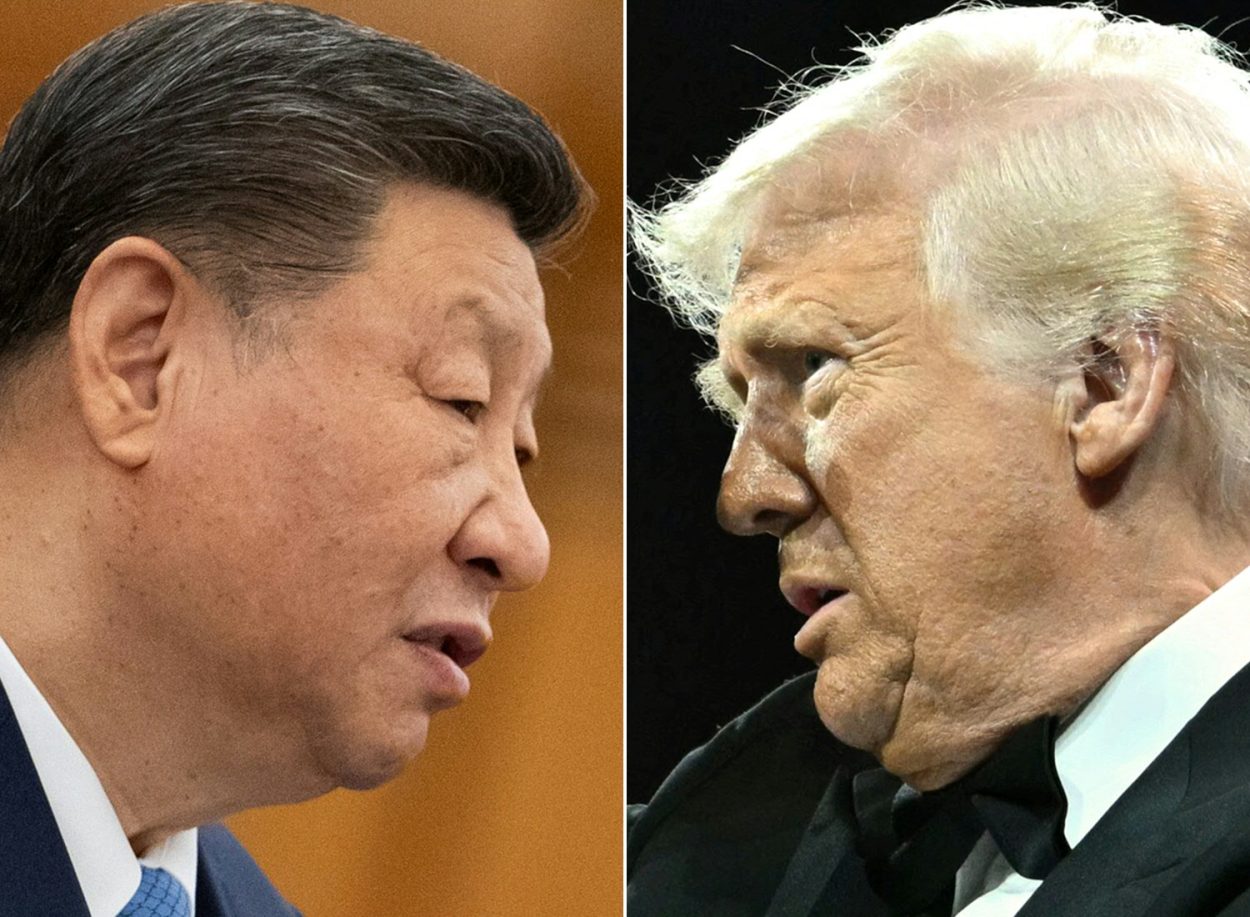Opinion Article by Dr. Imran Khurshid
With rare earths, energy deals, and regional rivalries converging in Balochistan, Islamabad is running out of room to maneuver.
Pakistan is once again attempting a delicate geopolitical balancing act between two rival superpowers—China and the United States. This time, the stakes are far higher, with rare earth minerals, energy deals, and regional security defining the emerging triangle of tension.
Recently, Pakistan’s Army Chief, General Asim Munir, visited Beijing on July 25, 2025, where Chinese officials delivered a firm and unmistakable message: ensure the safety of Chinese nationals, especially in Balochistan—a region riddled with insurgency but rich in natural resources.
China’s Foreign Minister Wang Yi explicitly stated that Beijing expects Pakistan to “resolutely combat all forms of terrorism” and “make every effort” to protect Chinese personnel and projects.
Almost simultaneously, Pakistan’s Foreign Minister Ishaq Dar was in Washington, meeting U.S. Secretary of State Marco Rubio, where the two sides discussed a broad energy and trade deal.
Shortly thereafter, President Donald Trump announced via social media that the U.S. and Pakistan had “just concluded a Deal … to work together on developing their massive Oil Reserves,” even suggesting that “maybe they’ll be selling oil to India someday.”
More tellingly, Trump’s strategic focus is on the region’s rare earth minerals—resources vital for high-tech and defense industries—over 90% of which are currently refined and processed by China, which also accounts for around 70% of global rare earth mining output.
Trump’s transactional worldview, driven by hard bargaining and strategic gains, is fuelling renewed U.S. interest in Pakistan. The increased frequency of high-level visits, warm White House receptions—including hosting the Army Chief for lunch—and Trump’s repeated praise of Pakistan’s leadership underscore this outreach.
Pakistan, in return, has played to Trump’s ego: nominating him for a Nobel Prize, publicly crediting him with ceasefires, bitcoin discussions, and trade deals. Even when the U.S. imposed a 29% tariff on Pakistani exports, Islamabad avoided criticism. Instead, following a downward revision to 19%, Pakistan hailed the move as a “balanced and forward-looking” decision.
The Foreign Ministry described it as the “successful conclusion” of trade talks, framing the outcome as a win for economic diplomacy and a boost for key sectors such as textiles, IT, and energy.
China’s Calculated Silence
Yet, the more puzzling dynamic lies in China’s response. Despite being the United States’ principal strategic rival and an adversary of India, China has shown a remarkable tolerance for Pakistan’s simultaneous closeness with the U.S.—a behaviour Beijing would never tolerate from any other country.
If any other nation had taken such massive Chinese loans, used 80% Chinese defense hardware, and still maintained deep military ties with Washington, China would likely have cut ties or retaliated diplomatically. But with Pakistan, it chooses leniency.
The reason is simple: for China, Pakistan serves as a geopolitical tool against India. Whether in peacetime diplomacy or wartime strategy, Pakistan remains a consistent and useful counterweight to India’s rise in South Asia.
Beijing has always viewed Pakistan through the India lens. During the Cold War, China tolerated Pakistan’s alignment with the U.S. for precisely this reason: it helped China contain and challenge India.
Even today, this logic persists—Pakistan not only helps Beijing keep India strategically boxed in, but also serves as a conduit to undercut, distract, and at times harm India’s interests through indirect means.
Pakistan’s deep hostility towards India—embodied in its long-standing doctrine of “bleeding India with a thousand cuts”—makes it a natural ally in China’s regional calculus.
Even when not acting at Beijing’s behest, Pakistan’s actions serve Chinese interests. Whether it’s promoting terrorism against India, opposing it in international forums, or destabilizing the region, Pakistan indirectly furthers China’s goal of restraining Indian influence—leveraging extremist proxies and asymmetric tactics that align with Beijing’s strategic objectives.
This explains why Beijing continues to pour billions into Pakistan under the China-Pakistan Economic Corridor (CPEC), despite severe security risks, repeated terror attacks on Chinese nationals, and mounting debts that Pakistan cannot repay.
China is well aware of the economic pitfalls, but the strategic utility outweighs the cost. A pragmatic country like China would not usually risk erosion of ties with India or tolerate being dragged into conflicts like the recent Operation Sindoor—where it reportedly offered real-time intelligence and backing to Pakistan—unless the long-term aim was to build and support a regional partner that could confront India on multiple fronts.
Many Indian analysts ask: why does China react aggressively when India engages the U.S., but not when Pakistan—whose ties with the U.S. go back decades—does the same?
The answer again lies in strategic value. India challenges China’s rise; Pakistan complements it. China does not object to Pakistan’s use of U.S. military platforms like the F-16, nor its growing military engagement with Washington. Instead, it sees a stronger Pakistan—even if supported by the U.S.—as a more effective instrument against India.

End Of The Comfortable Duality
This should be the lesson for the U.S. and its allies as well. If the West wants India to be a true counterbalance to China, it must stop questioning India’s strategic choices—such as buying discounted oil from Russia or diversifying its defense procurement. These choices enhance India’s capabilities, which ultimately serve the larger Western goal of balancing China in the Indo-Pacific.
Moreover, those who argue that India should distance itself from the U.S. just because China gets provoked must understand the real issue. The India–China dynamic is not merely about border disputes—it is a deep-rooted strategic rivalry and geopolitical competition involving overlapping spheres of influence.
Had China genuinely pursued greater engagement and a cooperative relationship with India, the current India–U.S. strategic alignment may not have deepened to this extent.
In fact, it would have taken just a sincere effort by China to build trust and stable ties with India, and the strong U.S.–India geostrategic convergence we see today might have remained limited or more transactional.
Meanwhile, under a Trump administration, the U.S. is not just interested in energy collaboration with Pakistan. It is eyeing Balochistan’s untapped rare earth reserves, where China already holds extraction deals.
Given Trump’s transactional nature, he is unlikely to allow China a free hand in that region. His tendency to impose last-minute demands—as seen during his pressure campaign on Zelensky during Ukraine’s crisis—suggests that Pakistan may be forced to offer its mineral resources first before receiving any real assistance from Washington.

This development is likely to create tension between Pakistan and China. China has invested heavily—economically, diplomatically, and even in blood—in Pakistan. Its workers have died in Balochistan, its funds are locked in unpayable debt, and its geopolitical credibility is tied to CPEC’s success.
Since 2021, at least 20 Chinese nationals have been killed and 34 injured in 14 separate terrorist attacks across Pakistan—including in Balochistan and Karachi—according to Pakistan’s National Counter Terrorism Authority.
If Trump pushes aggressively into Balochistan’s mineral sector, challenging China’s investments and interests, a point of friction will emerge. China will not remain silent if it senses betrayal.
Pakistan’s geopolitical tightrope is becoming increasingly thin. Managing simultaneous partnerships with Trump’s transactional America and Xi’s assertive China will demand extraordinary finesse—something even seasoned powers struggle to master. Any miscalculation could jeopardize Islamabad’s relationships with both, especially as overlapping strategic and economic interests begin to collide.
As many geopotential experts rightly observe, Pakistan managed the U.S.–China dynamic for years by aligning itself with China’s strategic objectives—chiefly, the containment of India. Beijing tolerated Islamabad’s occasional balancing acts because they served its broader goal of countering Indian influence. But that equilibrium is fraying.
With the U.S. now signing energy and mineral deals in Pakistan—particularly in Balochistan, where China has already entrenched itself through rare earth extraction and infrastructure projects—the two global powers are no longer separated by strategy; they are colliding over tangible economic assets.
China’s past strategic benevolence, shaped by Pakistan’s utility against India, is no longer guaranteed. If Beijing perceives Islamabad as compromising its core geoeconomic stakes to accommodate a transactional Washington, it will not remain passive.
Pakistan’s challenge has thus intensified. Even as the China relationship remains anchored in shared strategic concerns over India, the emergence of direct U.S. competition in sensitive economic sectors makes the old playbook of balancing increasingly obsolete. The days of comfortably playing both sides may be over. Tough choices—once avoidable—are now becoming inevitable.
- Dr. Imran Khurshid is an Associate Research Fellow at the International Centre for Peace Studies (ICPS), New Delhi. He specializes in India-US relations, Indo-Pacific studies, and South Asian security issues.
- THIS IS AN OPINION ARTICLE. VIEWS PERSONAL OF THE AUTHOR



